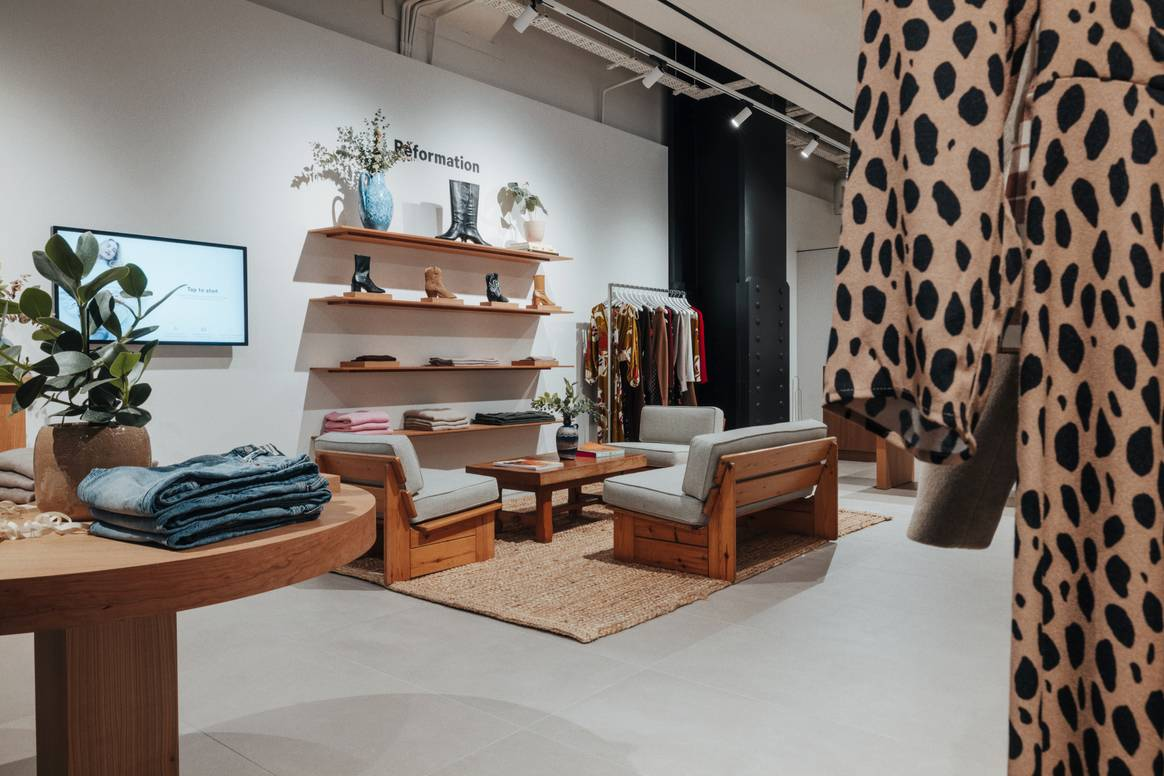The Changing Landscape of Fashion Retail in the UK
In 2025, the UK fashion retail sector finds itself at a fascinating crossroads. After years of digital advancement and the explosive growth of online shopping, recent research reveals a striking trend: more UK shoppers are choosing to buy their fashion in-store rather than online. This shift isn’t just a fleeting reaction but a result of evolving consumer preferences and a renewed appreciation for the unique experiences that brick-and-mortar stores offer.
The return to physical retail is more than a nostalgic nod to the past; it’s a complex development driven by several key factors, including the desire for tactile experiences, better customer service, and the social element of shopping. As we explore the reasons behind this trend, it becomes clear that the fashion industry is undergoing a major transformation in how it connects with customers.
In-Store Shopping: The Resurgence Explained
Why are UK shoppers increasingly favoring physical stores for their fashion needs? Several factors are at play, each contributing to a broader narrative of consumer empowerment and shifting priorities. Here are the main drivers:
- Tactile Experience: Shoppers want to feel, try on, and examine garments before making a purchase.
- Instant Gratification: Buying in-store means taking home purchases immediately without waiting for delivery.
- Personalized Service: Face-to-face interactions with knowledgeable staff provide tailored advice and recommendations.
- Social Engagement: Shopping outings are often shared experiences that foster connection and enjoyment.
- Reduced Online Hassles: Issues like sizing uncertainty, delivery delays, and complex returns are minimized in-store.
Each of these points reflects a growing sense of agency among consumers who want more control and enjoyment out of their fashion shopping journeys.
The Tactile Advantage: Fashion Is a Sensory Experience
One of the most powerful motivations for in-store shopping is the ability to engage with products on a sensory level. Fashion is inherently tactile—consumers want to touch different fabrics, examine details up close, and try on items to assess fit and comfort. While online shopping offers convenience, it cannot replicate the physical act of slipping into a new outfit and seeing how it looks in real time.
Recent surveys indicate that UK shoppers increasingly value this sensory feedback. For many, the disappointment of receiving a garment that looks different or fits poorly is a risk they prefer to avoid. In-store, there’s no guesswork: what you see is truly what you get.
Instant Gratification: The Appeal of Immediate Ownership
In an era of next-day delivery and click-and-collect, waiting for an online order can still feel like a test of patience. UK shoppers cite instant gratification as a major draw of in-store shopping. There’s no need to track parcels or worry about missed deliveries—customers can take their purchases home on the spot.
This immediacy is especially important for special events or last-minute needs, such as finding the perfect outfit for an unexpected dinner or a spontaneous weekend getaway. For many, the convenience of walking out of a store with a new wardrobe addition outweighs the benefits of online browsing.

Personalized Service: The Human Touch Matters
While online chatbots and AI-driven recommendations have advanced, nothing matches the expertise and warmth of an in-person sales associate. UK fashion shoppers often highlight the value of personalized service: advice on fit, suggestions for accessories, and honest feedback about style choices.
Stores have responded by investing in training staff and creating welcoming environments where shoppers feel valued. This human touch not only enhances the shopping experience but also fosters brand loyalty and trust—qualities that can be hard to achieve in the digital realm.
Shopping as a Social Experience
Fashion shopping has always been about more than just acquiring clothes. For many, it’s a social event—a chance to spend time with friends or family, enjoy a day out, and even discover new trends together. The pandemic years saw a decline in such outings, but the reopening of high streets and shopping centers has reignited the communal aspect of retail.
UK shoppers are embracing the opportunity to make fashion purchases part of a larger social experience, whether it’s a weekend trip to the city or a spontaneous stop after brunch. This sense of occasion cannot be replicated online and is a key factor driving the resurgence of in-store fashion retail.
Addressing Online Shopping Drawbacks
Online shopping, despite its convenience, comes with its own set of challenges—many of which have become increasingly apparent to UK consumers:
- Fit and Sizing Issues: Without the ability to try items on, sizing inconsistencies can lead to disappointment and hassle.
- Returns and Exchanges: The process of returning online purchases is often cumbersome and time-consuming.
- Shipping Delays: Even with express options, delivery can be unpredictable.
- Lack of Instant Feedback: Online reviews and photos only go so far in helping customers make informed choices.
Physical stores address these frustrations head-on, offering certainty and convenience that online platforms sometimes cannot match.
Retailers Respond: Innovations in Brick-and-Mortar Stores
Recognizing the shift in consumer behavior, UK retailers are reimagining the in-store experience. Stores are becoming destinations in their own right, offering more than just racks of clothing. Here’s how retailers are adapting:
- Interactive Displays: High-tech mirrors and digital lookbooks help customers visualize outfits and explore new styles.
- Personal Styling Services: Dedicated stylists and bespoke fitting rooms offer a tailored shopping journey.
- Events and Experiences: Stores host fashion shows, workshops, and exclusive previews to draw shoppers in.
- Sustainability Initiatives: Many brands are using their physical locations to showcase eco-friendly practices and sustainable collections.
These innovations aren’t just about keeping pace with online competitors—they’re about creating unique value that can only be found in person.
The Future of Fashion Shopping: Online and In-Store Harmony
While the resurgence of in-store shopping is making headlines, it’s important to recognize that the future of fashion retail is not a simple return to old habits. Instead, UK shoppers are seeking a harmonious blend of online and offline experiences. Omnichannel strategies—where customers can move seamlessly between digital and physical touchpoints—are becoming the norm.
Retailers who succeed in 2025 will be those who understand this interplay and offer flexibility, convenience, and delight across all platforms. For example, shoppers may research styles and check inventory online, then visit a store to try on and purchase, or vice versa. The key is to create a cohesive, customer-centric journey that adapts to the evolving needs of today’s fashion enthusiasts.
Conclusion: The Enduring Power of In-Person Fashion Shopping
The renewed preference for in-store fashion shopping in the UK is a testament to the enduring value of real-world experiences. In 2025, as the industry continues to evolve, it’s clear that physical stores remain a vital part of the retail landscape. By providing tactile engagement, immediate satisfaction, personal service, and social enjoyment, brick-and-mortar outlets are meeting the multifaceted needs of modern shoppers.
As fashion retailers innovate and adapt, one thing remains certain: the future of shopping is not about choosing between online and offline, but about embracing the best of both worlds. For now, UK consumers are showing that when it comes to fashion, nothing quite compares to the excitement and satisfaction of shopping in-store.











